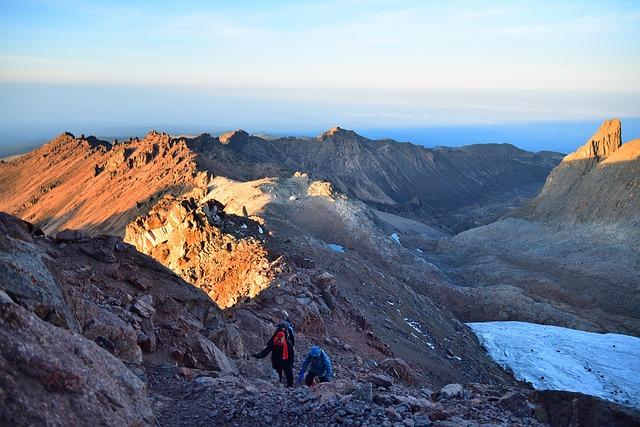Preparations for the much-anticipated Mount Kenya Mountain Running Championships have entered their final and most intensive phase, organisers announced this week. As athletes from across the country gear up to tackle the challenging slopes of Kenya’s second-highest peak, event officials are leaving no stone unturned to ensure a seamless and thrilling competition. With heightened security measures, enhanced logistical support, and rigorous course assessments underway, the stage is set for one of the most exhilarating mountain running events on the local sporting calendar.
Mount Kenya Mountain Running Championships Training Intensifies as Athletes Gear Up for Challenge
As the countdown to the Mount Kenya Mountain Running Championships continues, athletes from across the region are ramping up their training routines with renewed focus and determination. The rigorous preparation includes high-altitude endurance runs, strength conditioning, and technical trail navigation sessions designed to tackle the diverse and challenging terrain of Mount Kenya’s slopes. Coaches have emphasized the importance of adapting to rapidly changing weather patterns and altitude variations, which are pivotal for success in one of East Africa’s most grueling mountain races.
Key training components highlighted by participants:
- Early morning endurance runs above 3,000 meters
- Interval workouts to boost speed and recovery
- Trail-specific agility drills focusing on rocky and slippery surfaces
- Strength sessions targeting core and lower body stability
- Altitude acclimatization through staged climbs
| Training Week | Focus Area | Average Distance (km) |
|---|---|---|
| Week 1-2 | Endurance Building | 50 |
| Week 3-4 | Speed & Recovery | 40 |
| Week 5 | Altitude Acclimatization | 30 |
Organizers Ensure Safety and Logistics Are in Place Ahead of High-Altitude Event
Comprehensive safety protocols have been meticulously drafted by the event organizers to address the unique challenges posed by the high-altitude terrain of Mount Kenya. Medical teams, equipped with advanced oxygen support and emergency evacuation gear, have been stationed at strategic points along the race route. In addition, communication networks have been enhanced to maintain continuous contact between race officials, medical personnel, and rescue teams, ensuring rapid response in case of any incidents.
Logistical preparations extend beyond safety, with careful attention given to athlete welfare and event execution. Essential supplies such as hydration stations, nutritional checkpoints, and rest areas have been positioned to optimize performance and recovery. Transport arrangements catering to participants, officials, and spectators have been coordinated with local authorities to facilitate smooth transit. The table below summarizes key logistical features planned for the event:
| Logistical Element | Details |
|---|---|
| Medical Posts | 5 strategically positioned with oxygen tanks |
| Communication | Satellite and radio links across all checkpoints |
| Hydration Stations | 7 stations offering water and electrolytes |
| Transport | Shuttle buses between base camp and race points |
| Rest Areas | 3 shaded zones with medical assistance |
Experts Recommend Focus on Endurance and Acclimatization for Peak Performance
As the countdown to the Mount Kenya Mountain Running Championships continues, coaches and sports scientists are stressing the importance of tailored endurance training paired with effective acclimatization strategies. The rigorous terrain and fluctuating altitudes of Mount Kenya demand that athletes not only build their cardiovascular stamina but also adapt physiologically to the thinner air. Leading experts emphasize that a gradual increase in training intensity at high altitudes, combined with controlled exposure periods, can significantly enhance oxygen efficiency and delay the onset of fatigue during competition.
To achieve optimal readiness, athletes are advised to integrate the following components into their preparation regimen:
- Progressive altitude training: Spending 2-3 weeks above 2,500 meters to stimulate red blood cell production.
- Interval endurance sessions: Incorporating uphill sprints and long runs to build both aerobic and anaerobic capacity.
- Hydration and nutrition: Maintaining electrolyte balance to support muscle function and recovery.
- Rest and recovery: Allowing adequate sleep and low-intensity days to prevent overtraining.
| Training Focus | Recommended Duration | Key Benefit |
|---|---|---|
| High-altitude exposure | 2-3 weeks | Increased red blood cell count |
| Hill sprints | 3 sessions/week | Improved anaerobic power |
| Long distance runs | 4-5 hours/week | Enhanced aerobic endurance |
Wrapping Up
As the Mount Kenya Mountain Running Championships draw nearer, organizers and athletes alike are intensifying their preparations to ensure a successful and competitive event. With training schedules ramping up and logistical arrangements falling into place, the stage is set for an exhilarating showdown on Kenya’s iconic slopes. Stakeholders remain optimistic that this year’s championships will not only showcase exceptional athletic prowess but also boost the profile of mountain running nationally and beyond. Coverage will continue as final preparations reach their peak ahead of race day.





